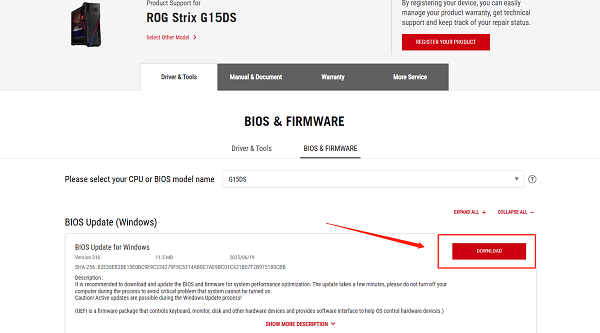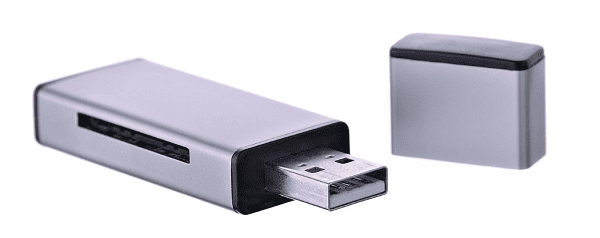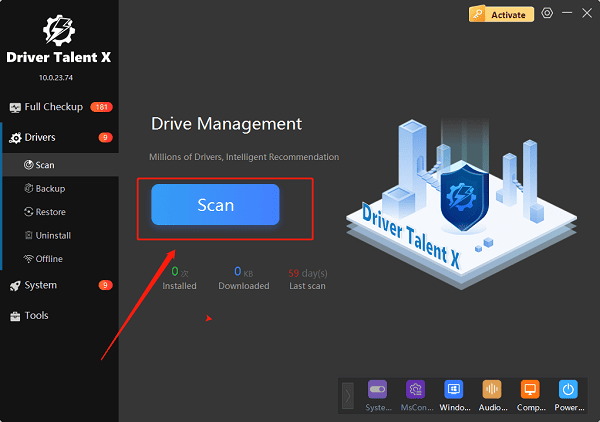
Updating the BIOS on your ASUS motherboard can improve system stability, compatibility, and overall performance. However, BIOS updates carry risks if not performed correctly.
Many users also face issues where certain drivers may stop working after a BIOS update. To ensure your system runs smoothly, it's essential to update both the BIOS and related motherboard drivers.
In this beginner-friendly guide, we'll provide detailed steps for updating your ASUS BIOS and show how to update motherboard drivers using Driver Talent X.
Why You Should Update Your ASUS BIOS?
The BIOS (Basic Input/Output System) is firmware that controls the fundamental hardware functions of your motherboard. Updating the BIOS can:
Fix bugs and system errors
Improve compatibility with new hardware
Enable advanced motherboard features
Boost overall system performance
However, an interrupted or incorrect BIOS update can corrupt the firmware, potentially making your PC inoperable ("bricking" the motherboard). That's why it's important to follow safe methods and update motherboard drivers afterward to restore full functionality.
Step 1: Check Your Current BIOS Version
Before updating:
Press Win + R, type "msinfo32", and press Enter.

In the System Information window, find "BIOS Version/Date".
Note your current BIOS version and date.
This helps you confirm whether an update is necessary.
Step 2: Download the Latest BIOS for ASUS
Go to the ASUS Support website.
Enter your motherboard model in the search bar (e.g., ROG Strix G15DS).
Go to the Support page, then "Driver & Utility" > "BIOS & Firmware".

Download the latest BIOS version compatible with your motherboard.
Save it to a USB drive formatted with FAT32.
Step 3: Update BIOS Safely Using ASUS EZ Flash
Restart your PC and enter the BIOS setup by pressing Del or F2 during boot.
Navigate to "Tools" > "ASUS EZ Flash Utility".
Select the BIOS file from your USB drive.

Follow the on-screen instructions to begin the update.
Wait for the process to complete without interrupting power or turning off the system.
Restart the computer once the update is finished.
Step 4: Update Motherboard Drivers Using Driver Talent X
After a BIOS update, some drivers may become outdated or stop working. To ensure all motherboard components function correctly, use Driver Talent X:
1. Download and Install Driver Talent X:
Download and install the program.
2. Scan Your System for Outdated Drivers:
Launch Driver Talent X and click "Scan".

The program will detect missing, corrupted, or outdated motherboard drivers, including chipset, audio, and network drivers.
3. Update Drivers:
Review the scan results.
Click "Upgrade" to automatically download and install the latest official drivers.
Driver Talent X will handle driver removal and installation safely.
4. Restart Your Computer:
Restarting ensures that updated drivers take full effect.
Using Driver Talent X after a BIOS update prevents potential hardware malfunctions and restores system stability.
FAQs About BIOS and Driver Updates
Q1: Is updating the BIOS risky?
A: Yes, a failed BIOS update can corrupt the motherboard firmware and make your PC inoperable. Always ensure uninterrupted power and follow official procedures.
Q2: Can Driver Talent X update my BIOS?
A: No. Driver Talent X is a driver management tool and cannot update BIOS. It is only used for updating motherboard, graphics, audio, and other hardware drivers.
Q3: How often should I update my motherboard drivers after a BIOS update?
A: It's recommended to scan and update drivers immediately after a BIOS update, then check every 1–2 months for new updates to maintain stability and performance.
Conclusion
Updating the BIOS on your ASUS motherboard can enhance performance and fix system issues, but it must be done carefully.
After updating the BIOS, some drivers may stop working, so using Driver Talent X to scan and update all motherboard drivers ensures your system runs smoothly.
Regularly maintaining both BIOS and drivers keeps your Windows 10/11 PC stable, compatible with new hardware, and optimized for the best performance.
See also:
Intenso USB Driver Not Working? How to Fix It
Fuji Xerox DocuPrint CP305d Driver Download Tutorial
How to Fix USB2.0-CRW Device Not Recognized in Windows









